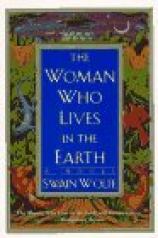Reading Group Guide
Discussion Questions
The Woman Who Lives in the Earth

1. A young girl is the hero of this story. Why is Sarah capable of transformation?
2.What is the significance of the title The Woman Who Lives in the Earth?
3. How does the emotional and natural landscape of the novel reflect our times? Why has this canvas been considered universal?
4.What is it about the language of the novel that creates the menacing atmosphere?
5.How does the sensual imagery of the story ground us in a reality that allows us to accept the magic realism of the story?
6.Some involved in the ecology movement embraced The Woman Who Lives in the Earth as an environmental parable. What does the novel suggest about the power of nature?
7. The story has been described as a fable and a parable. How does such a form of storytelling serve to express the real story, which is true and useful?
8. What does the fox, Marishan Borisan represent? How does he act as an agent of change?
9. The story is unflinching in its portrayal of the aggression that accompanies fear. Do you see such a pairing on societal and individual levels today?
10.What does the novel suggest about the effect of an individual on culture?
11. How does the treacherous triumvirate of authority, terror and record-keeping embody the ills of society?
12. Sarah and her great-grandmother Lilly have a very special relationship. How do youth and age, or innocence and experience, resemble each other?
The Woman Who Lives in the Earth
- Publication Date: August 15, 2012
- Paperback: 192 pages
- Publisher: HarperCollins
- ISBN-10: 0060927925
- ISBN-13: 9780060927929






